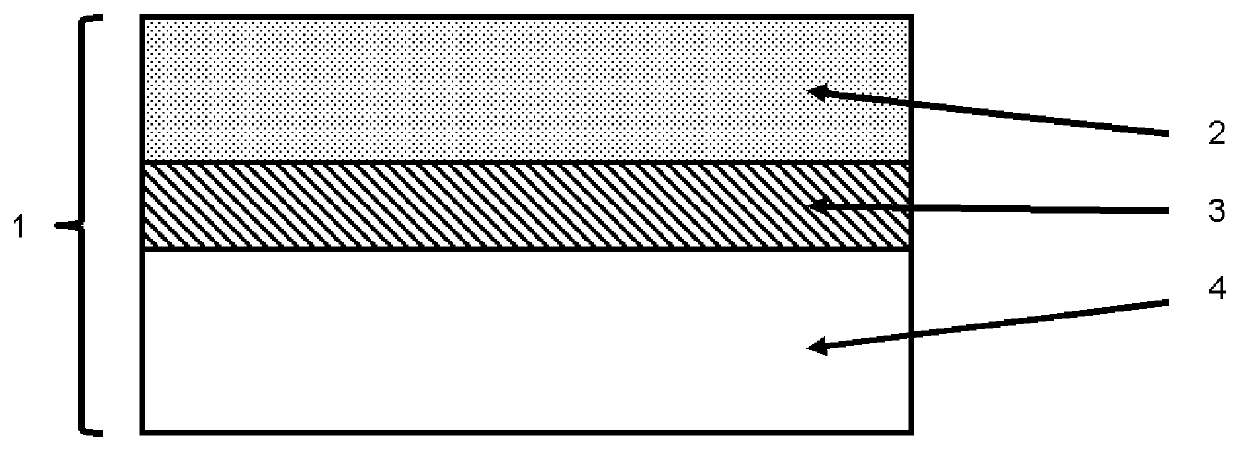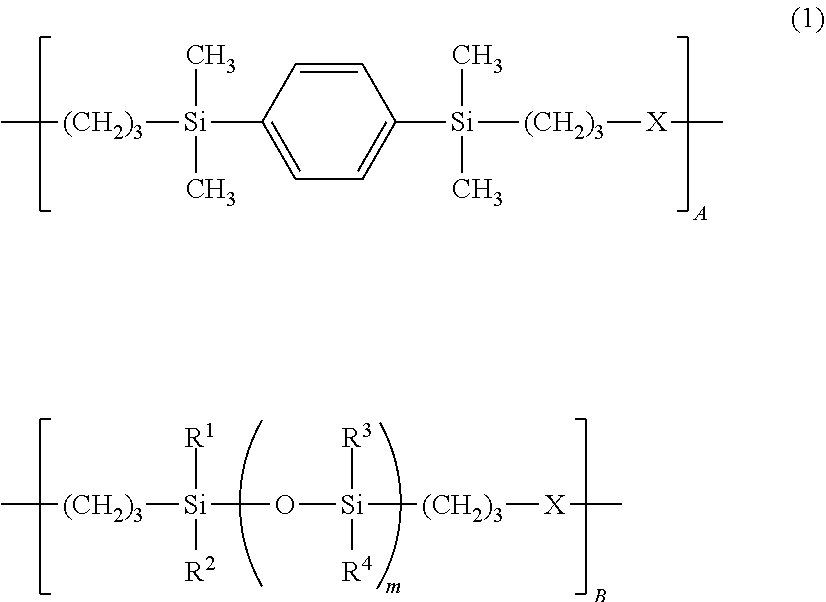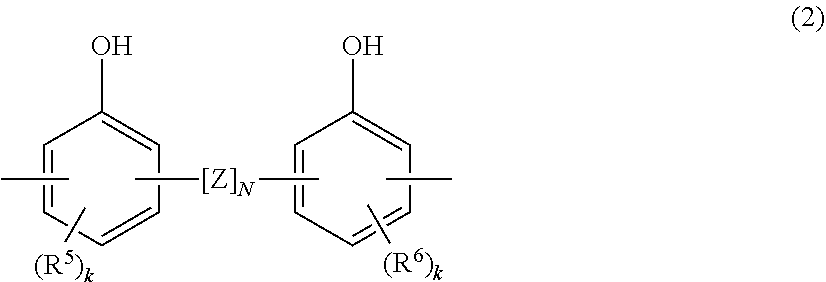Method for manufacturing thin substrate
a manufacturing method and technology for thin substrates, applied in the direction of film/foil adhesives, organic non-macromolecular adhesives, solid-state devices, etc., can solve the problems of inability to add the operation step required, tape is not suited to the steps, and system is unable to meet the requirements of the operation step, etc., to achieve excellent polishing resistance, improve dimensional stability, and short time
- Summary
- Abstract
- Description
- Claims
- Application Information
AI Technical Summary
Benefits of technology
Problems solved by technology
Method used
Image
Examples
first embodiment
The First Embodiment
[0053]The temporary adhesive film for substrate processing used in the present invention contains a siloxane bond-containing polymer having a weight average molecular weight of 3,000 to 500,000 in an amount of 10 parts by mass or more and 100 parts by mass or less relative to 100 parts by mass of the total mass, in which the siloxane bond-containing polymer is preferably contained in an amount of 50 parts by mass or more. Although the temporary adhesive film for substrate processing in the present invention is not particularly limited if it contains a siloxane bond-containing polymer having a weight average molecular weight of 3,000 to 500,000 in an amount of 10 parts by mass or more and 100 parts by mass or less relative to 100 parts by mass of the total mass, the temporary adhesive film preferably contains a siloxane bond-containing polymer shown by the following general formula (1) and / or (3) as the main ingredient.
[0054]As the siloxane bond-containing polymer...
second embodiment
The Second Embodiment
[0069]Although the temporary adhesive film for substrate processing in the present invention is not particularly limited if it contains a siloxane bond-containing polymer having a weight average molecular weight of 3,000 to 500,000 in an amount of 10 parts by mass or more relative to 100 parts by mass of the total mass, the siloxane bond-containing polymer is preferably a cured material of a composition containing:
[0070](p1) an organopolysiloxane having an alkenyl group in the molecule,
[0071](p2) an organohydrogenpolysiloxane containing two or more silicon atom-bonded hydrogen atoms (Si—H groups) in one molecule, in such an amount that a mole ratio of the Si—H group in the component (p2) to the alkenyl group in the component (p1) ranges from 0.3 to 15; and
[0072](p3) a platinum-based catalyst.
[0073]Hereinafter, each component will be described.
[Component (p1)]
[0074]The component (p1) is an organopolysiloxane having an alkenyl group(s) in the molecule. The compone...
preparation example 1
Resin Solution Preparation Example 1
[0113]In a flask equipped with a stirrer, a thermometer, a nitrogen purge system, and a reflux condenser, 43.1 g of 9,9′-bis(3-allyl-4-hydroxyphenyl)fluorene (M-1), 29.5 g of organohydrogensiloxane having the average structural formula (M-3), 135 g of toluene, and 0.04 g of chloroplatinic acid were introduced, and the mixture was heated at 80° C. Then, 17.5 g of 1,4-bis(dimethylsilyl)benzene (M-5) was added dropwise into the flask over 1 hour. At this time, the temperature inside the flask was increased to 85° C. After completion of dropwise addition, the mixture was aged at 80° C. for 2 hours, toluene was then distilled off, and 80 g of cyclohexanone was added thereto to obtain a resin solution containing cyclohexanone as a solvent with a concentration of the resin solid of 50 mass %. When the molecular weight of the resin in the solution was measured by GPC, the weight average molecular weight was 45,000 in terms of polystyrene. Then, 0.1 g of t...
PUM
| Property | Measurement | Unit |
|---|---|---|
| thickness | aaaaa | aaaaa |
| thickness | aaaaa | aaaaa |
| thickness | aaaaa | aaaaa |
Abstract
Description
Claims
Application Information
 Login to View More
Login to View More - R&D
- Intellectual Property
- Life Sciences
- Materials
- Tech Scout
- Unparalleled Data Quality
- Higher Quality Content
- 60% Fewer Hallucinations
Browse by: Latest US Patents, China's latest patents, Technical Efficacy Thesaurus, Application Domain, Technology Topic, Popular Technical Reports.
© 2025 PatSnap. All rights reserved.Legal|Privacy policy|Modern Slavery Act Transparency Statement|Sitemap|About US| Contact US: help@patsnap.com



